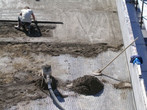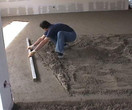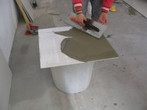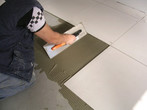GENERAL DETAILS
- Stones are natural materials characterized by a variety of colours and shades and their beauty is just due to this peculiarity;
- the works represented in this catalogue and on our website are made with materials supplied by our Company and they are not created with the use of a PC;
- the colour of the OPUS INCERTUM in QUARTZITE ELDORADA PINK 15-25 mm., is made by heating up at 750 °C, for about 10 minutes, the Opus Incertum in Quartzite Eldorada Yellow 15-25 mm. It is an irreversible process. However, to avoid that the material gets broken during the heating, the least hard pieces of yellow opus are used. This fact, together with the high temperature of the process, makes the pink opus less hard than the yellow opus. This difference between the two materials is usually noticed by touching them;
- QUANTITIES EXPRESSED IN m²: by crazy paving, the quantities indicated by us in m² are nominal and correspond to stone layers contained in the crates and/or pallets. The right outcome is achieved by coinciding each layer bought to a m² of laid material (adapting a standard joint of 15/25 mm.) A laying different from the standard one, like a particularly shaped or not squared surface, must require a major quantity of purchased material in respect to the nominal m² of the covering area. We suggest that you buy at least 10% more material than your theoretical needs;
- by the OPUS INCERTUM in STONE of LUSERNA possible side holes are due to the material’s processing. They are therefore a feature and not a product’s defect;
- OXIDATION: the stocking of natural stones, which often takes place externally, in contact with atmospheric agents (the sun, rain, humidity, etc.), can involve phenomena prone to the chromatic alterations of the materials (colour’s loss if dry or accentuation of it if wet) or the appearance of a greenish patina due to the formation of micro-organisms like moulds and/or lichens. This last process could also happen on material laid in very shady zones. This problem can be solved by washing and/or treating the stones with the products of the Company FILA Industria Chimica S.p.A. (www.filasolutions.com). These phenomena can’t be attributed to the quality of the stone;
- Stone of Luserna, which is rich in iron components, can generate rust spots with water contact; this phenomenon is completely natural and impossible to predict. With the passing of time the process stops and the spots tend to fade, blending to the colour of the stone without affecting its aesthetic. An immediate result can be achieved treating Stone of Luserna with the products of the Company FILA Industria Chimica S.p.A. (www.filasolutions.com);
- PACKAGING. Complaints of aesthetic nature on the packaging are not accepted. The wood colour, regardless of its darkness, does not affect the quality of the packed material; the finalities of the packaging of our material is strictly for transportation, handling and storage.
LAYING
- The broken natural stones are characterized by different shades of colours, varying thickness and by the structure of their surface (more or less smooth). In order to obtain the best natural effect and to enhance these characteristics, we suggest you, when lying, to take out of the packaging all the tiles and/or irregular pieces and to distribute them by mixing the different shades of stones;
- external lying can be only made when temperatures are > 0°;
- in order to protect the flooring from stains of oil or grease, you should treat it with the products of the Company FILA Industria Chimica S.p.A. (www.filasolutions.com), to be spread after the final laying and when the floor is clean and dry, i.e. 20-30 days after the laying. Water and oil-repellent products also make the cleaning easier, as they increase the water resistance of the stone. The application of these products must be made only according to the suggestions on the label;
- however, the layer is always responsible for the laying.
Traditional laying with mortar
- suggested mixture of the mortar, to allow that it sticks well, notwithstanding low and high temperatures and as much waterproof as possible, is made up of:
300 Kg. of white cement - 1 m³ of fine sand;
- the advantage of white cement is that it reduces considerably the probabilities of superficial efflorescence after the laying;
- mortar must be spread on a bed of cement, previously cleaned and wetted (no stagnation of water), in order to avoid adherence problems;
- the bed of cement must be made at a height which allows to contain both the thickness of the mortar, between 2 cm. and 5 cm., both that of the stone to be laid;
- the mortar should not be spread to the total area to be covered, but only to that required for the laying of two or three pieces. Before laying, it is necessary to wet with water the laying face, then to apply a layer of liquid cement. These two processes, in addition to improving the adhesion of the stone, allow to reduce the absorption of any substances which can cause stains, present in the mortar;
- the joints between the pieces of opus must be between 15 and 25 mm. They must be sealed, after coating the entire surface. To this purpose, it is necessary to use a mixture made up of 1/3 fine sand, 1/3 of white cement and 1/3 of clean water. It is necessary to fill the joints with this mixture until they are full. As soon as the mixture begins to dry, it is recommended to remove the excess with a trowel first and then to wash using a sponge wetted with clean water;
Calibrated stones makes a lot easier and quicker the laying steps, since they need little space between the sub grade and the finished level, they allow a wider use of it, e.g. indoors.
Laying with adhesive
- Substrates must be executed in a workmanlike manner: dry (max 5% measured by electric hydrometer), clean, flat, with no dust, grease and anything else that could prevent/affect proper adhesion. The maturation of the screed requires approx. 28 days, unless the use of binders made with special cements, which are controlled-shrinkage and/or fast setting (such as Monokronos or Kronos from Technokolla). In this case, the installation / laying can be executed after 24 hours from casting. Any existing substrates must be solid, stable and with no cracks;
- we recommend the use of high performance adhesives to lay natural cleft or calibrated stones. For areas treadable only after three hours we recommend the use of products classified C2FTE S1 according to UNI EN 12004 such as Stone Maxi or Technorap-2 from Technokolla. These products are particularly suitable with low temperatures or when it is necessary a thick bed adhesive (with high thickness). In fact with these products it is possible to execute the laying with natural cleft stones as you can reach a high thickness (max 2 cm.). Alternatively, you can use an adhesive with high performances, standard setting, such as Techniko from Technokolla, class C2TE;
- for the application of the adhesive it is needed the use of a toothed trowel to ensure that the quantity spread out on the substrate covers at least 80% of the stone slab. It is important to make a double spread (floating & buttering method), that is to say 2 coatings, by using 8 mm. toothed trowel on the substrate and 8 mm. toothed trowel also on the back of the slab. The grouting will be possible after 4-6 hours, according to the temperature, if fast setting adhesives have been used, and after 24-48 hours if it has been used Techniko;
- for the grouting of the joints, from 15 to 25 mm., we recommend the use of TechnostuckGG from Technokolla, a cement-based grout classified CG2 WA according to UNI EN 13888;
- for a proper use of the above mentioned products, we recommend to consult the relative technical datasheets, that you can download in the website www.technokolla.it
La Quarzite - Natural Stone
Protection & care
Quartzite varieties:
Eldorada Yellow - Eldorada White - Eldorada Pink - Eldorada Rainbow Pink - Eldorada Green Grey - Honey Yellow - Europa Grey - Grey - Gold-Yellow - Chinese Granite
Indian Stone varieties:
Modak Yellow - Mint Green Yellow - Dolphur - India Grey - India Black - Himalaya Gold - Eden Yellow-Brown Eden Grey Blue - Silver Grey - Rainbow.
WASHING AFTER LAYING
After laying is complete, the floor must be washed thoroughly to remove all laying residues, such as grout, adhesive, etc... For this purpose Fila recommends FilaCleaner neutral detergent diluted 1:20. Avoid using acids. Even if diluted, acids tend to corrode the surface.
NATURAL FINISH STAIN PROTECTION
Spread a coat of FilaW68 over a clean and dry floor. Apply a second coat 4 hours after the first. Wait 4 hours, then apply a coat of FilaMatt finishing wax (matt finish) or FilaSatin (satiny finish).
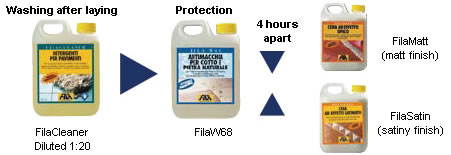
Slate varieties:
Grey - Multicolour - Black - Green - Purple
WASHING AFTER LAYING
After laying is complete, the floor must be washed thoroughly to remove all laying residues, such as grout, adhesive, etc... For this purpose Fila recommends FilaCleaner neutral detergent diluted 1:20. Avoid using acids. Even if diluted, acids tend to corrode the surface.
NATURAL FINISH STAIN PROTECTION
Apply a coat of Fila MP90 to a dry and clean floor using a brush, sponge or other applicator. Rub in during application and wipe off any excess.
COLOUR ENHANCING STAIN PROTECTION
Apply a coat of FilaStonePlus to a dry and clean floor using a brush, sponge or other applicator. Rub in during application and wipe off any excess. The surface can be walked on after 8 hours.
MAINTENANCE
For routine care, dilute FilaCleaner 1:200 in water. Highly diluted. Does not require rinsing. Increase the quantity of product in the solution up to 1:30 – 1:50 for a deeper clean or in case of stubborn dirt.
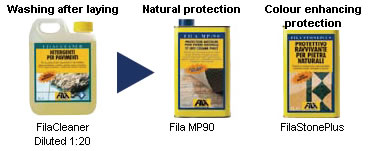
Detergents
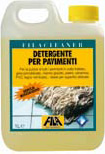
FilaCleaner
The neutral detergent that does not leave residues. It is ideal for the initial cleaning on acidsensitive
floors and for routine maintenance. Available in 1 litre and 5 litre plastic containers.
Waxes
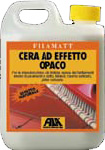
FilaMatt
Matt-finish wax, able to enhace the natural look of the material. Ideal for both treatment and maintenance purposes, it protects surfaces from dirt and wear and gives them a completely natural look. Available in 1 litre and 5 litre plastic containers.
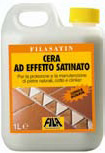
FilaSatin
The wax that generates a dirt and dust repellent protection layer against foot traffic wear and can be polished several times. Easy to apply and care for. Highly recommended for home floors, where it performs at its best. In taniche da 1 litro e da 5 litri.
Protectors
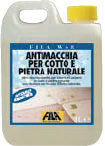
FilaW68
The natural effect oil repellent for interior and exterior surfaces that gives in-depth, long lasting protection. Available in 1 litre and 5 litre plastic containers.

Fila MP90
Stainproofing agent that penetrates deeply into the floor, protects it and makes cleaning easier. Available in 1 litre and 5 litre cans.

FilaStonePlus
Colour enhancing protection for marble, granite, and natural stone with either glossy, honed, or rough finish. Available in 1 litre and 250 ml cans.
Extraordinary maintenance
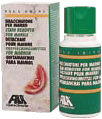
Fila SR95
The innovative stain remover able to remove coloured stains such as wine, soft drinks, coffee… from marble and natural stone. 250 ml bottles.
FilaNoSpot
The stain remover spray that eliminates the most stubborn oil and grease stains from marble and natural stone. 250 ml bottles.


















